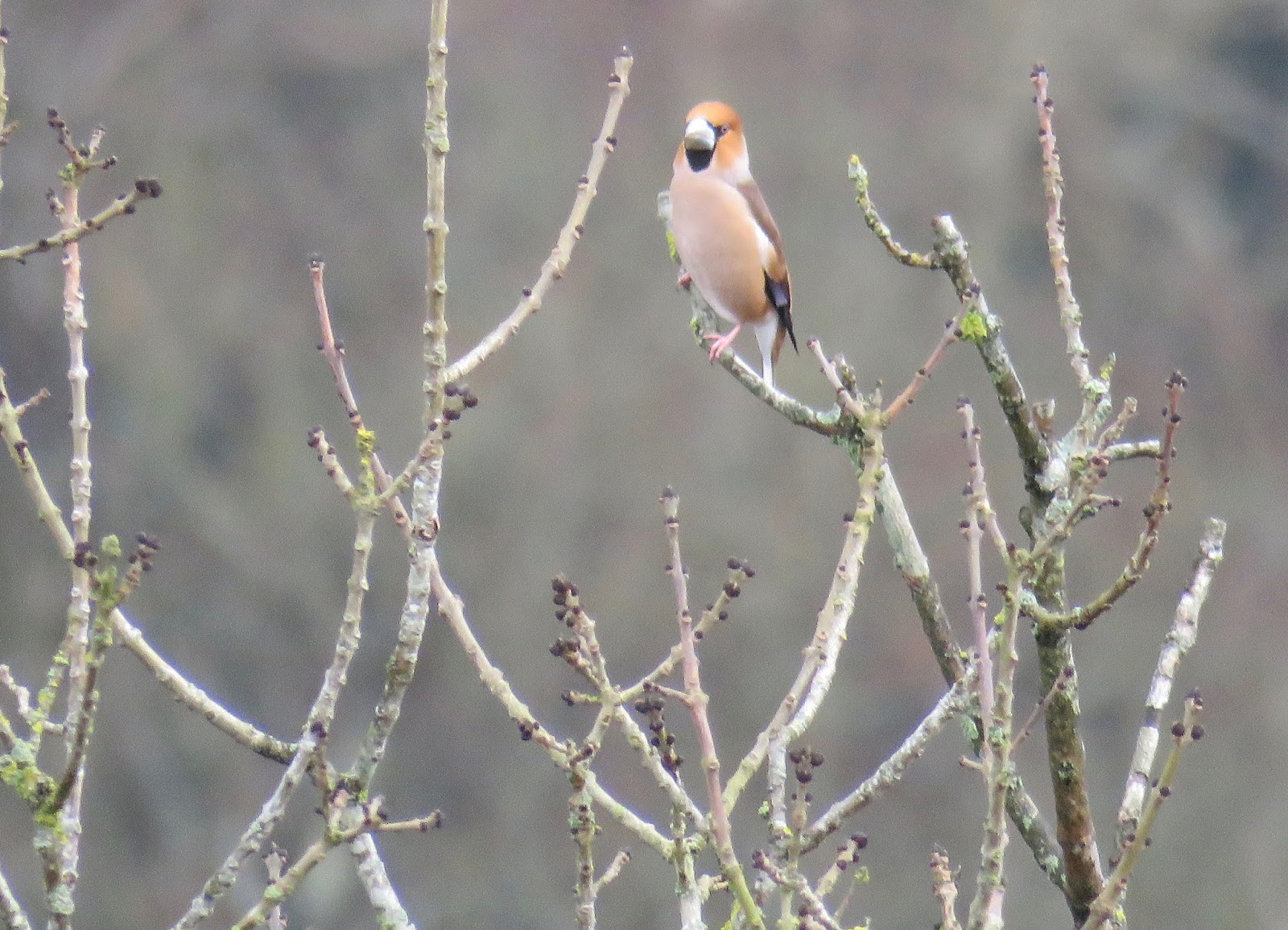March - April: The irruption continues
March carried on where February had left off with hundreds of Hawfinches. The epicentre of the Coccothraustes action was still the Bramblehall Wood - Ashurst Rough area, although birds were spilling out into Juniper Bottom, Mickleham Downs and Box Hill. The 'other' Hawfinch gathering, west of the Mole Gap and centred around Dorking Wood, continued to host high numbers also. Tuesday 13 March was to witness the high point in the irruption, during an early morning visit to Bramblehall Wood,
I was in the Whitehill Carpark by 06.15hrs and within ten minutes found myself staring across the field and into the tree tops of Bramblehall Wood. I was frankly surprised to see, at this early hour, at least 200 Hawfinches already on show (part of the flock pictured above). They were quite motionless and, I think it safe to assume, had just emerged from a very close roosting site. Over the following hour more birds arrived (mainly from the direction of Ashurst Rough) to join them. From time to time numbers left the tree tops to dive into the wall of Yew beneath, birds being observed moving amongst the foliage as they fed, barging through the vegetation. A flock of c100 then took to the air and headed purposefully northwards along the tree-line, appearing to disappear towards High Ashurst Outdoor Centre, not to be seen again. The rest of the birds then moved off southwards, then settled some 400m further along. At 07.15 things started to get very busy indeed. It began with a lose flock of 200 birds that came in over my head and circled the birds that were already present in front of me. Those in the trees then also took to the air - not the 100+ that I had assumed were present but at least 250 of them - and I was witness to a kaleidoscope of Hawfinches, a blizzard of wing-bars, tail-tips and excited calling. 450+ birds in all. Plus, there were 50+ birds behind me, up in the Yews. Together with the 100 that had left northwards earlier in the morning that made for a minimum of 600. Incredible. And do you know what happened to this mass of Hawfinches? They just melted away. Gone with barely a whimper, to be consumed by that dense wall of Yew trees. All became very quiet indeed.
The rest of the month continued to produce high counts (550 at Bramblehall on 20th), and as March ticked on by new satellite sites started to produce Hawfinches as well. There were several days when I wandered far and wide 'hoovering' up these birds - 60 here, 20 there - it was unforgettable birding. I honestly believe that within a three mile radius of the Mole Gap, centred on Mickleham, there were a minimum of 1,000 Hawfinches. A minimum. But it had to end. By the first week of April there had been a big clear-out (200 on 1st, dropping to just three on the 10th at Bramblehall), and then... silence. I must admit to feeling a sense of relief and much as one of loss. If you would like to read more about this incredible event I have produced two documents, both of which can be found in the tab called 'Hawfinch Corner', top right of this post.
The rest of April could have been excused if there was a sense of the anti-climatic about it, but a phone call from my Beddington chums on 15th had me dashing down to my old stomping ground to feast my eyes on the first BSF Hoopoe for close on fifty years (below). A short break at Dungeness mid-month had plenty of highlights, with an hour-and-a-half's skywatching on 19th producing a southerly movement of Common Buzzards, Marsh Harriers and Sparrowhawks together with a bonus Red Kite, Goshawk and three Hawfinches. With the number of moth species and flowering plants on the increase my birding eye was switching onto other things. I awaited the summer with anticipation.




Comments